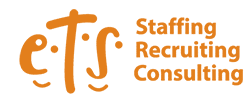 Recent demographic trends have created a unique landscape in the workplace – Gen Z is here, while professionals are extending their careers later than ever. With 4 generations joining together in the workplace, each with its own style and approach, it’s no wonder organizations are struggling with how to manage this multigenerational workforce.
Recent demographic trends have created a unique landscape in the workplace – Gen Z is here, while professionals are extending their careers later than ever. With 4 generations joining together in the workplace, each with its own style and approach, it’s no wonder organizations are struggling with how to manage this multigenerational workforce.
Companies have no choice but to develop a culture that attracts younger generations while appealing to older employees too. So, how can you build a team that leverages the skill sets, perspectives, and experiences of an age-diverse workforce?
Assess your Current Workforce
It’s crucial to start by understanding your workforce, not just trends. Ask questions, like “What current generations are represented?”, “Is there a generation that dominates our management team?” and “Is there any current collaboration with these generations?”
Manage Strengths and Weaknesses
Each generation comes with inherent strengths. When combined, they offer a wide range of skills and perspectives to draw from. Millennials, for example, are known to be tech-savvy and quick on their feet, both very valuable traits, but a reliance on technology and tendency to rush to action can sometimes be detrimental to their success. Baby Boomers, while perhaps less comfortable with technology, tend to be somewhat more cautious. Being aware of these tendencies will help determine which tasks to delegate to which employees.These generational characteristics are based on the common threads, but every employee is unique. It’s important to recognize the value that each generational group brings to the team without ignoring individual strengths.
Drive Engagement
Despite differences in age, experience and outlook, when it comes to engagement, generations tend to value the same things. These engagement factors include purpose, role clarity, utilization, autonomy, friendship, trust, authenticity, fairness, feedback, rest, meaning, and professional development. Each group shares many of these same drivers, but each is motivated and prioritizes them differently.
Facilitate Collaboration
Collaboration shouldn’t be saved for a weekly team meeting. The right strategies can help create a cohesive collaborative process. Try creating a board or working group that contains representatives for all age groups, or implement a mentorship program – switch it up and have the younger generation mentor the older ones.
Breaking down barriers that inhibit collaboration happens by creating opportunities to work together.
From Baby Boomers to Gen Z, it is critical for companies to find innovative ways to create an engaged and collaborative workforce. As you work to develop a workplace that appeals to all ages, don’t lose sight of your mission, vision and values, and remember there is no “one-size-fits-all” solution.



